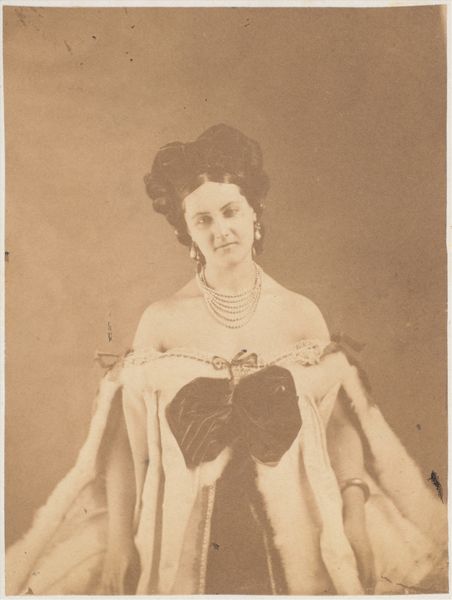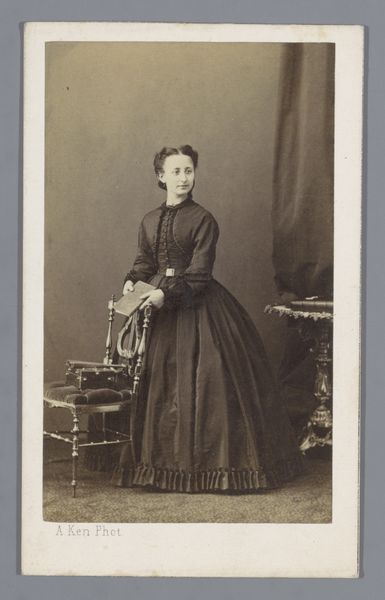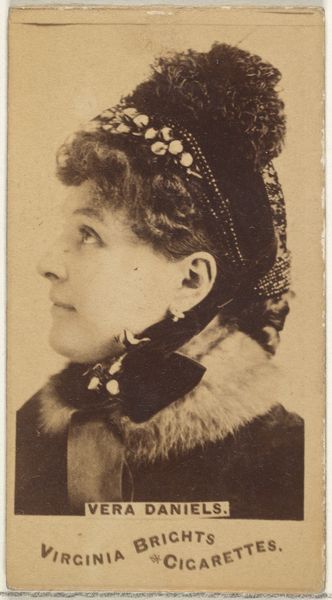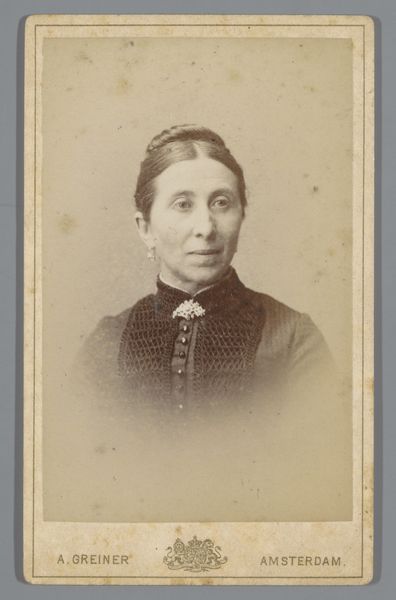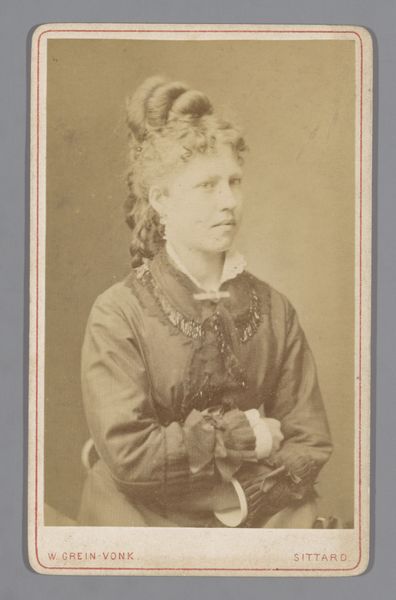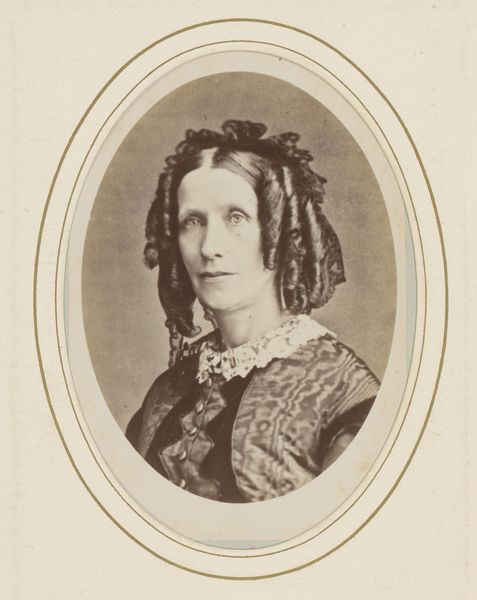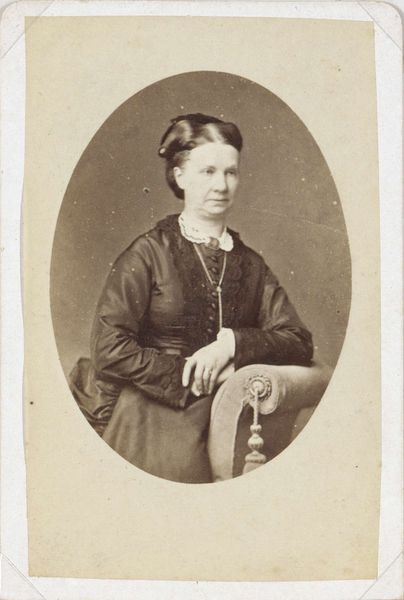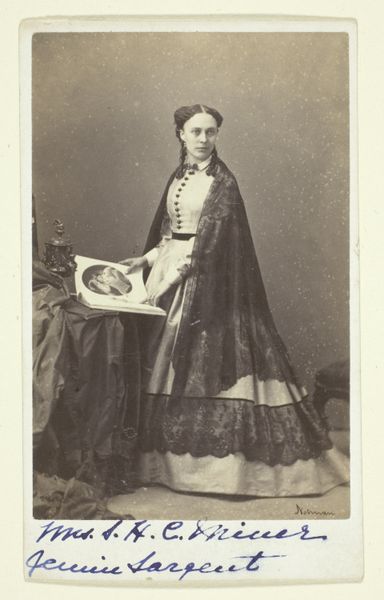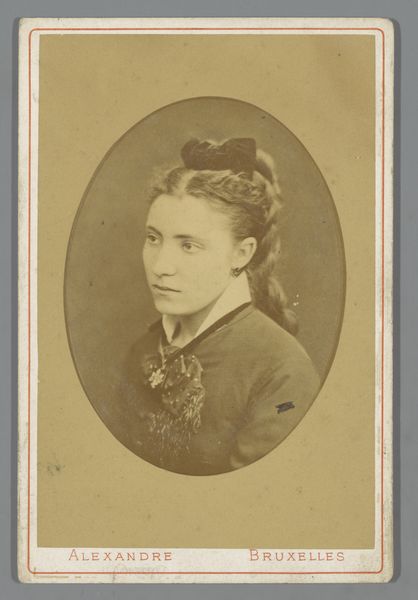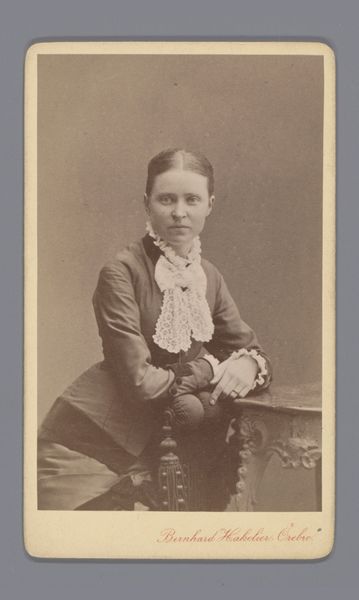
Dimensions: 9 × 5.8 cm (image); 10.6 × 6.2 cm (card)
Copyright: Public Domain
Editor: This is an untitled portrait of a woman, believed to have been taken sometime between 1850 and 1899, by G.C. Gilchrest. It's a gelatin silver print and albumen print currently housed at the Art Institute of Chicago. There's something very direct, almost unsettling, about her gaze. What strikes you most when you look at it? Curator: What immediately captures my attention is the social context embedded in this seemingly simple portrait. In the mid-to-late 19th century, photography democratized portraiture. It wasn't just the wealthy elite who could have their likeness captured anymore. What kind of social mobility do you think having a photograph taken and distributed enabled, particularly for women? Editor: That’s a great point! I guess it gave them a degree of visibility and permanence they might not have otherwise had. Curator: Exactly. It became a way to participate in the public sphere, to assert a kind of presence. Consider how photographic studios operated then. They were businesses, often catering to specific social classes or political affiliations. Who do you think Gilchrest's studio primarily served and how would that impact the way the image was composed or presented? Editor: I hadn't thought of it that way. I suppose it suggests that this photograph, while seemingly personal, also operates within a commercial and perhaps even political system of representation. Perhaps Gilchrest tried to present the sitter in a respectable or even aspirational light to attract further clients. Curator: Precisely. It's about understanding the visual language of the time and how power dynamics influenced even the most intimate portrayals. Looking at the woman's dress and lace collar, do you think these markers of status helped shape public perception of her social position? Editor: Yes, absolutely. The attire indicates a certain level of respectability, aligning with societal expectations for women during that period. Curator: Seeing this photograph in a broader historical context really enriches its meaning. It is about far more than just one person's face, but how an emerging industry interacted with existing societal structures. Editor: Absolutely, I'll never see a portrait quite the same way. Thanks!
Comments
No comments
Be the first to comment and join the conversation on the ultimate creative platform.
